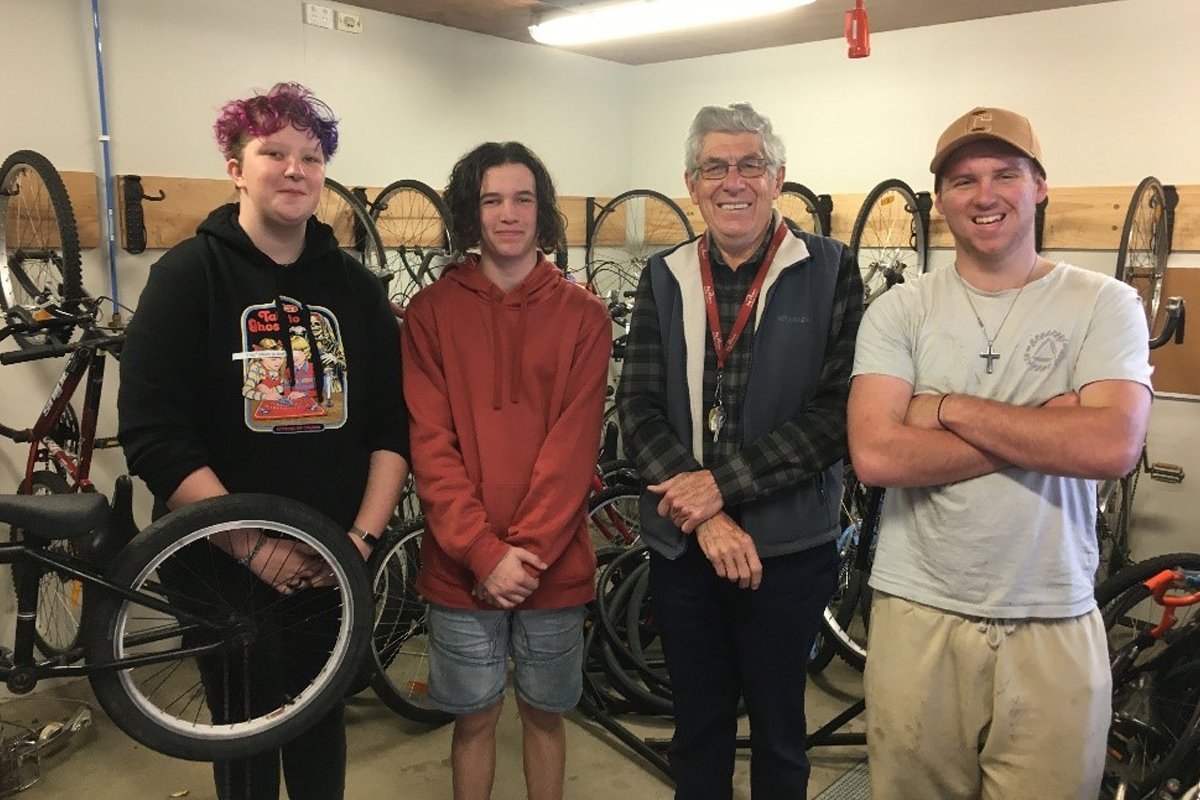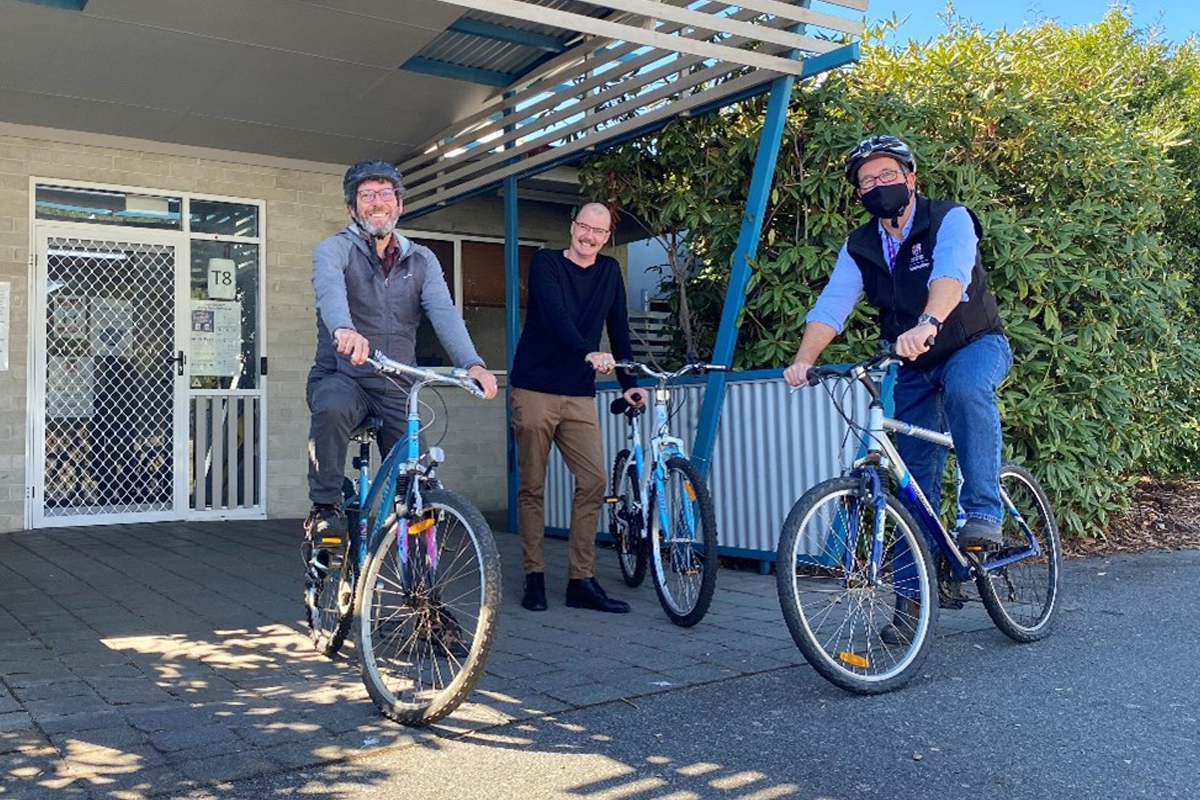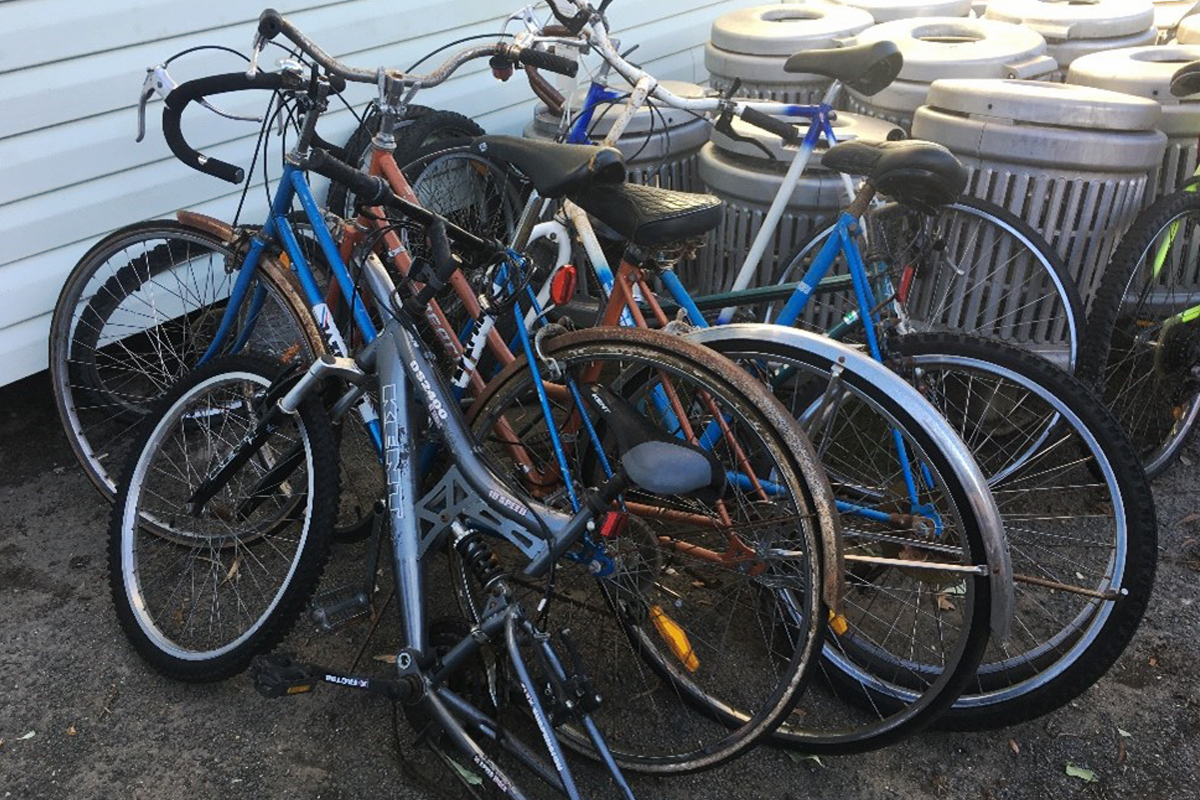Re:Cycle
Re:Cycle is a small program with a big impact. In a unique partnership between the University of Tasmania (UTAS) and Big Picture School in Launceston, at-risk students are taught how to repair abandoned bicycles. The program fosters sustainability by saving bikes from landfill, avoiding waste, and reducing embodied carbon associated with the production of new bikes. Students learn the value of repairing and restoring things and gain the necessary technical and life skills required to fix and sell the bikes (with all funds donated to the UNHCR to support refugees globally as they flee from war and persecution in search of a better life). An additional benefit of the program is the promotion of cycling to university staff through the provision of campus bikes as well as bikes for students doing placements in rural towns.
> The initiative
It’s an unfortunate reality that bicycles are sometimes abandoned on University of Tasmania campuses. With deflated tyres, rusty chains and cobwebs growing between their spokes, these unloved machines make for a sorry sight. When discovered, the Sustainability Team tags the bikes and gives students several months to make contact. However, sadly most remain unclaimed.
With a mounting stockpile of several dozen unloved but potentially useful bicycles through 2021 at our two main campuses in Hobart and Launceston, the Sustainability Team at UTAS developed a program called Re:Cycle, which focuses on two main ways of bringing new life to the bikes and making sure they don’t end up as scrap metal or in landfill.
The first way that bikes are rescued is through a partnership with a unique school in Launceston, called the Big Picture School, that runs a program called Bob’s Bikes. This is centred on giving at-risk students the opportunity to learn to repair and restore bikes, which are then sold to raise funds for the United Nations High Commissioner for Refugees (UNHCR). People purchasing the bikes are introduced to the joys of cycling, something which has the potential to bring long-lasting benefits to them and the community. UTAS even purchases bikes from Bob’s Bikes, primarily for use by health students doing placements in rural towns.
At the UTAS campus in Hobart, a similar system is in place to also collect abandoned bikes for donation to Hobart Bike Kitchen, an organisation that teaches people, including UTAS students, how to repair bicycles and then take a bicycle home. Hobart Bike Kitchen is open nearly every Sunday year-round.
The other way that abandoned bikes are being reused is a bit more novel. Selected abandoned bikes are cleaned and serviced, before being officially commissioned for use by staff as campus bikes. Now, whenever staff need to move around campus – and don’t happen to be transporting a fridge – they have the option of zipping around on a bike, saving time compared to walking, or carbon emissions compared to driving.
Both aspects of Re:Cycle have required almost no funding, thanks in large part to Bob’s Bikes being run by a volunteer retiree (the indefatigable Bob Blackman). Indeed, with such a simple, replicable concept, the impact of Re:Cycle has the potential to stretch well beyond its humble beginnings in Tasmania. Viva la Velocipedes!
> Environmental and social benefits
There are many significant environmental and social benefits of the Re:Cycle program and these are uniquely intertwined in the program. Environmental benefits include reducing waste to landfill, reducing embodied carbon associated with the manufacture of new bicycles and reducing carbon emissions by promoting cycling instead of driving.
The social benefits are arguably even more substantial, including things like the promotion of cycling (with its subsequent health and social benefits), empowering at-risk students by helping them gain important life skills at the same time as helping shape positive attitudes to cycling and the concept of charitable giving, and the raising of funds to support the work of the UNHCR.
An interview with three of the students involved with Bob’s Bikes highlighted the importance of that aspect of the total program. A boy called Jarod spoke of how he began his involvement primarily because of an interest in mechanics. However, over time he has come to be at least as motivated by the charitable side of the program, which sees kids receiving bikes and funds raised for refugees. In Jarod’s own words, ‘Bob’s Bikes is the gift that keeps on giving’.
> Leadership and engagement
Re:Cycle is distinctive in many ways. Firstly, it is a low-cost initiative in a context where many sustainability related activities require high levels of resourcing. Secondly, the program is both simple and effective, again in contrast with many very complex programs (for example, energy management schemes) which although important, may be harder for people right across an institution to engage with and understand. Thirdly, for a small program, the number and range of benefits are impactful for individuals involved as are the number of direct and indirect beneficiaries.
> Significance to the sector
In the context of sustainability within higher education, the feature of Re:Cycle that is most distinctive is its low-key, grassroots nature. In finding a creative solution to a real problem the program is generating real impact yet has done so with very little resourcing or publicity.
> Wider societal impact
The societal impacts of Re:Cycle are potentially significant. These include things like the promotion of cycling (with its subsequent health and social benefits), empowering at-risk students by helping them gain important life skills at the same time as helping shape positive attitudes to cycling and the concept of charitable giving, and the raising of funds to support the work of the UNHCR.
> Learner/Graduate employer impact
The benefits to employers of students who have participated in Re:Cycle are multiple and layered. In the case of the Bob’s Bikes students, for example, these young people are gaining not only very useful mechanical repair skills, but their self-esteem is also being boosted, they are learning about the importance of charitable giving, and they are learning how to stick at something for the long haul.






